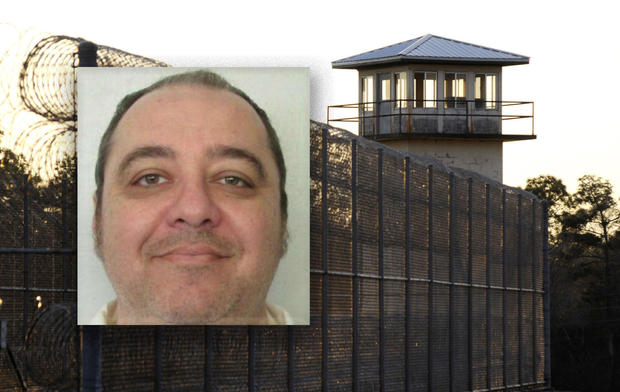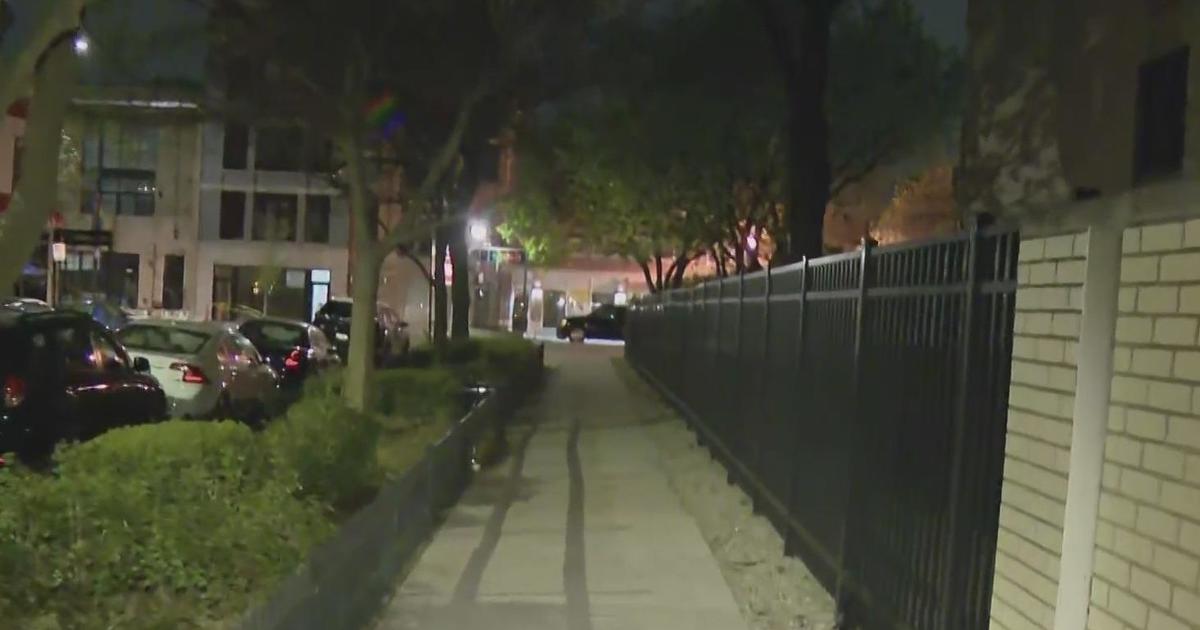What is nitrogen hypoxia? Alabama's Kenneth Smith execution proceeds with unprecedented, controversial method
A death row inmate in Alabama, Kenneth Eugene Smith, was executed Thursday night by nitrogen hypoxia, a controversial and untested method that has prompted legal pushback and public scrutiny from critics within the United States and abroad.
The condemned inmate became the first to die this way. Smith was convicted in the 1988 killing of a pastor's wife as part of a murder-for-hire scheme and has been imprisoned for decades in Alabama. He already survived a botched lethal injection in November 2022 — one of four in Alabama since 2018, which was the same year the state authorized the use of nitrogen hypoxia in the death chamber. It is among three states, along with Oklahoma and Mississippi, that technically permit the method as an alternative in the death chamber since lethal injections in recent years have become harder to get.
Before Thursday, no execution has ever been carried out in the U.S. using the method, and experts have repeatedly warned that nitrogen toxicity may cause the condemned person to suffer unnecessarily while at the same time threatening the health of others in the room.
In a news briefing following the execution, Alabama Department of Corrections Commissioner John Q. Hamm said that the execution began at 7:53 p.m., and Hamm was pronounced dead at 8:25 p.m. The nitrogen mask was kept on Smith for about five minutes after he flatlined, Hamm said.
According to the pool media report, Smith's last words were: "Tonight Alabama caused humanity to take a step backward. I'm leaving with love, peace and light. Thank you for supporting me. Love all of you."
He also made an "I love you" sign with sign language, reporters said.
A reporter also stated that Smith "appeared to shake and writhe on the gurney for at least two minutes at the start of the execution," asking Hamm whether that was "expected" or an indication of "suffering."
"It appeared that, one, Smith was holding his breath for as long as he could," Hamm responded. "And then there's also information out there that he struggled against his restraints a little bit, but there's some involuntary movement and some angled breathing. So that was all expected and is in the side effects that we've seen, researched, with nitrogen hypoxia."
Smith and his spiritual adviser, the Rev. Jeff Hood, said in a statement prior to the execution that "the eyes of the world are on this impending moral apocalypse."
"Our prayer is that people will not turn their heads. We simply cannot normalize the suffocation of each other," they said.
What is nitrogen hypoxia?
Nitrogen hypoxia is a process where pure nitrogen gas, or nitrogen gas at concentrations high enough to be lethal, is inhaled to the point of causing asphyxiation. It is a relatively new alternative to more common forms of capital punishment, like lethal injection and electrocution, which are the two methods used most prevalently across the U.S., according to the Death Penalty Information Center.
The non-profit organization noted that "lethal gas" is authorized broadly as an execution method in seven states, including Alabama, Mississippi and Oklahoma, although only those three have specified the use of nitrogen for this purpose, and only Alabama has released a formal execution protocol for nitrogen hypoxia. The protocol was issued last August, and the version made available to the public is heavily redacted.
Breathing nitrogen through a mask could in theory cause a person to lose consciousness before oxygen deprivation leads to death, and Alabama officials have insisted that this is most likely how the scheduled execution will happen. But Smith's legal team, while seeking an injunction to halt the execution plans that was ultimately rejected, accused the state of using him as a "test subject" for a lethal experiment. And the United Nations' human rights office called on Alabama to stop the execution, noting there is "no scientific evidence to prove" that execution by nitrogen inhalation will not cause "grave suffering."
A group of U.N. consultants raised concerns about the execution several weeks ago, saying "that nitrogen hypoxia would result in a painful and humiliating death." Ravina Shamdasani, the spokesperson for Volker Türk, who is the U.N. High Commissioner for Human Rights, later warned that execution by nitrogen asphyxiation "could amount to torture or other cruel, inhuman or degrading treatment or punishment under international human rights law."
What do we know about inhaling nitrogen gas?
During the execution, officials said Smith will be strapped to a gurney chamber and forced to breathe nitrogen through a gas mask until his body is depleted entirely of oxygen and shuts down. Although it has never been used before inside the death chamber, the consequences of too much nitrogen inhalation — usually accidentally in industrial settings — are well-documented.
Nitrogen exists organically in the atmosphere, and actually composes around 75% of the air that humans and animals breathe every day. But the colorless and odorless gas is only safe to inhale when it is mixed with an appropriate concentration of oxygen; otherwise, breathing it in is toxic. Veterinarians have refused to use nitrogen asphyxiation to euthanize animals because of its "distressing" effects and potential risks to people around.
Commercially and industrially, pure nitrogen is used in products like fertilizer, nylon and various dyes, as well as explosives. Because nitrogen displaces oxygen, it is often used at chemical plants and manufacturing facilities to shield certain equipment from contaminants, including oxygen, which could damage the equipment or in some cases even pose fire hazards or cause explosions. Liquid nitrogen is also used in laboratories and medical settings, for flash-freezing and other purposes.
The U.S. Chemical Safety Board issued a series of bulletins in the early 2000s that reviewed cases of nitrogen asphyxiation over the previous decade, with the aim of raising awareness and relaying proper safety protocols to prevent such situations from happening. In one bulletin that references information from the Compressed Gas Association, the board notes that when enough nitrogen is introduced to deplete oxygen in the air to less than 10%, effects on the human body can be lethal, potentially causing "inability to move, loss of consciousness, convulsions" and death.
Even partial oxygen displacement can have serious consequences. Research has shown that when oxygen levels in the air are down to around 12.5%, humans can experience "impaired respiration that may cause permanent heart damage" along with nausea, vomiting and "very poor judgment and coordination."
How did the execution work?
The mask the state placed over Smith's face was a "NIOSH-approved Type-C full facepiece supplied air respirator," which is a type of mask sometimes used by industrial workers to get life-saving oxygen, the Associated Press reported, citing a court filing related to the execution.
"After the nitrogen gas is introduced, it will be administered for (1) fifteen minutes or (2) five minutes following a flatline indication on the EKG, whichever is longer," read a portion of Alabama's protocol for execution by nitrogen hypoxia.
Most redacted portions of the protocol are those involving how the gas system is stored, tested and set up. Some of the sections still accessible to the public do acknowledge the potential risks associated with having nitrogen tanks in the workplace and note that staff tasked with handling the lethal gas system will receive training. Departing from protocols for other forms of capital punishment, the state says any staff member involved in the execution in a non-essential role will be dismissed from the death chamber after the mask is fixed to the condemned inmate.
Alabama's protocol does not allow a spiritual advisor in the chamber "unless they review and sign the spiritual adviser nitrogen hypoxia acknowledgment form" ahead of time. That restriction formed the basis for a lawsuit filed by Rev. Hood, who is a spiritual adviser to death row inmates, challenging the use of nitrogen hypoxia in executions.
Hood told CBS News last month that the method prevents him from doing his job properly because agreeing to support a condemned person through this type of execution could potentially put his own health in danger. He also said the rule in and of itself goes against a Supreme Court decision in March 2022 that required states to allow spiritual advisers to be present with condemned inmates in their final moments.




